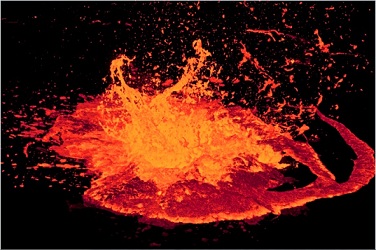Know your volcano, understand the risks

Related topics
Environment & climate action Innovation France Germany Italy Portugal United Kingdom Environment Norway Cameroon Cape Verde Indonesia Philippinesdate: 20/02/2015
Project: Mitigate and assess risk from volcanic i...
acronym: MIAVITA
See also: CORDIS
The Miavita project conducted research on volcanoes in Cape Verde, Cameroon, Indonesia and the Philippines. It engaged with local stakeholders to carry out disaster risk assessment and mitigation activities for the populations established in these hazardous areas.
As part of this exercise, the project developed new risk mitigation and crisis management methods and worked out suitable strategies for the various communities. In addition, the researchers installed or reinforced crucial monitoring, communication and information infrastructure. The system Miavita deployed to keep tabs on the activity of Cape Verde’s Mount Fogo notably helped to provide early warning of the volcano’s return to activity in late 2014.
The partners have also issued a handbook that will facilitate similar initiatives for other volcanoes. This publication provides guidance on aspects as diverse as hazard mapping, risk mitigation, civil protection activities during a crisis, and ways to build resilience.
No room for complacency
Between eruptions, volcanoes may seem perfectly harmless. They can easily lull local populations into a false sense of security, but preparedness does pay off. Lives can be saved if the volcano is monitored, action has been taken to mitigate the risks, and the services, infrastructures and strategies needed in the event of a crisis are in place.
Miavita focused on four very different areas threatened by four very different volcanoes: Mount Cameroon, Mount Fogo in Cape Verde, the Indonesian volcano Merapi and the Kanlaon in the Philippines. While all are major hazards, the actual risk to the population depends on the nature of volcano and on the context, says project coordinator Pierre Thierry of the Bureau de Recherches Géologiques et Minières (BRGM).
Effusive volcanoes like Fogo and Mount Cameroon, he explains, mainly disgorge slow-moving streams of lava — which is bad enough, but less risky to the neighbourhood than the eruptions of explosive volcanoes like Merapi. Those are liable to unleash the full range of volcanic hazards, which for instance also include powerful blasts, gigantic plumes of fire and flying rocks, ash clouds, landslides and rivers of mud.
And, of course, some volcanic areas are more densely populated than others. Mount Merapi, for example, borders on a bustling city. “In the case of Fogo,” says Thierry, “the threat is mainly to buildings and crops, but not so much to the residents. Volcanoes like the Merapi, however, are extremely dangerous for populations because of the massive explosions. More than 380 persons died when it erupted in 2010, and over 400 000 people were displaced.”
Second-guessing a hot-headed neighbour
Miavita enabled adjacent communities to analyse their exposure and plan ahead for a potential crisis. Emphasising the need to involve all stakeholders, the project engaged with the authorities, the various emergency services and the residents. It produced detailed assessments of the vulnerability of populations, infrastructures and assets.
The project also helped to install or improve crucial infrastructures. For Mount Fogo, this involved setting up a particularly sensitive, cost-effective system to monitor the volcano, which is located on a small island, and finding a way to transmit the data to a scientific institution on a neighbouring island. Thierry reports that these upgrades were instrumental in predicting the volcano’s eruption in November 2014, enabling a local scientist to warn the authorities more than a day in advance. The eruption destroyed two villages located near the peak of this sparsely populated volcano, but there were no casualties.
To support initiatives focusing on other volcanoes, Miavita has published a handbook on volcanic risk management. This publication offers clear, practical information for all stakeholders including local authorities, emergency services and residents. If you live near a volcano, do check it out.
Volcanic Risk Management handbook
